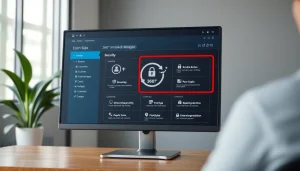Maximize Your Productivity: The Essential Role of Virtual Assistants in Business Success
Understanding Virtual Assistants: What They Do and Why You Need Them
Definition and Overview of Virtual Assistants
A virtual assistant (VA) is a professional who provides support services to businesses, entrepreneurs, or individuals from a remote location. Unlike traditional assistants who operate on-site, virtual assistants work from their own homes or offices and leverage technology to perform their duties. This modern role has transformed significantly due to the rise of remote work, digital entrepreneurship, and advancements in communication tools.
Essentially, virtual assistants serve as administrative, technical, or creative support personnel who can take on a plethora of tasks, freeing up your time to focus on strategic initiatives. They can help manage schedules, perform research, handle customer inquiries, and much more.
Common Tasks Handled by Virtual Assistants
The tasks performed by virtual assistants can vary widely based on their expertise, your business needs, and their specific role. Here are some of the most common tasks:
- Administrative Support: Organizing schedules, managing emails, data entry, and filing systems.
- Customer Support: Responding to client inquiries, managing chat support, and handling follow-ups.
- Social Media Management: Creating and scheduling posts, engaging with followers, and monitoring online presence.
- Content Creation: Writing articles, creating presentations, and developing marketing materials.
- Research Tasks: Performing market research, gathering data, and summarizing findings for decision-making.
- Technical Duties: Basic website management, software updates, and troubleshooting support.
Benefits of Hiring Virtual Assistants
Employing virtual assistants offers several benefits despite the initial uncertainties some businesses may face about outsourcing. Here are the key advantages:
- Cost Efficiency: Hiring a virtual assistant is often more affordable than maintaining a full-time employee with benefits, office space, and equipment.
- Access to Global Talent: You can hire specialists from around the world, giving you access to a wider range of skills and expertise.
- Increased Productivity: By delegating mundane tasks, you can focus on core business activities, ultimately boosting productivity.
- Flexibility: Virtual assistants offer flexible solutions by allowing you to hire for specific projects or on a part-time basis, which is ideal for fluctuating workloads.
- Time-Saving: Freeing up time to focus on strategic decisions rather than getting bogged down in administrative tasks can significantly enhance business growth.
Top Reasons to Consider Virtual Assistants for Your Business
Cost-effectiveness of Virtual Assistants
The cost efficiency of hiring virtual assistants cannot be overstated. Traditional hiring involves overhead costs, including office space, equipment, insurance, and benefits. In contrast, VAs operate from their own locations, making them a budget-conscious option for many businesses. Often, you can hire a VA for the tasks that need to be done without the long-term financial commitment associated with full-time employees.
Flexibility and Scalability with Virtual Assistants
Flexibility is another primary advantage of hiring virtual assistants. Businesses can scale their operations up or down as needed without the complications of hiring or laying off staff. If your workload suddenly increases due to project demands or seasonal spikes, hiring additional VAs for temporary support can ensure that you maintain your service levels without straining your current team. This scalability is especially beneficial for small businesses and startups.
Enhancing Customer Service with Virtual Assistants
A skilled virtual assistant can enhance your customer service strategy significantly. By having someone dedicated to responding to customer queries and managing their interactions, you can ensure that your clients feel valued and heard. This improves customer satisfaction and retention. Furthermore, with 24/7 support options, you can cater to a global audience across different time zones, boosting your brand’s reputation and reach.
How to Hire the Right Virtual Assistant for Your Needs
Steps to Define Your Requirements
Before you start searching for a virtual assistant, it’s crucial to clearly define your needs. Start by identifying specific tasks that require delegation. Then, consider the skills necessary for these tasks. Create comprehensive job descriptions that clarify expectations and preferred qualifications. A clear understanding of the role will help you convey your vision to prospective candidates effectively.
Where to Find Qualified Virtual Assistants
Finding qualified virtual assistants has become increasingly straightforward with platforms dedicated to freelance work. Here are some preferred platforms to search for VAs:
- Upwork: A formidable platform hosting thousands of freelancers including top-rated virtual assistants.
- Fiverr: Another popular marketplace that enables you to find VAs specializing in diverse services at varying price points.
- Zirtual: This service is tailored to match clients with dedicated U.S.-based virtual assistants.
- Freelancer.com: A site that connects you with professionals across various sectors.
Conducting Effective Interviews for Virtual Assistants
Once you have shortlisted candidates, conducting interviews is vital. Prepare a combination of behavioral and skills-based questions that relate to the specific tasks they will handle. For instance, asking how they would manage multiple deadlines can reveal their time management skills and problem-solving capabilities. It’s also essential to assess their familiarity with the tools you use for your business to ensure a smooth transition.
Best Practices for Working with Virtual Assistants
Setting Clear Expectations with Virtual Assistants
To foster a productive working relationship, it’s imperative to set clear expectations from the outset. Outline specific goals, deadlines, and deliverables in a written agreement. This documentation can serve as a reference point to avoid misunderstandings and ensure accountability.
Tools and Technologies for Collaboration with Virtual Assistants
Utilizing the right tools facilitates seamless collaboration with your virtual assistant. Some popular tools include:
- Trello or Asana: For task management and progress tracking.
- Slack: For real-time communication and team collaboration.
- Google Workspace: For file sharing, email, and collaborative document editing.
- Zoom or Microsoft Teams: For virtual meetings and video calls.
Performance Metrics to Evaluate Virtual Assistants
To ensure your virtual assistant is meeting requirements and contributing to your business goals, set performance metrics to evaluate their work. Metrics can include:
- Quality of Work: Regular reviews of completed tasks.
- Timeliness: Evaluating adherence to deadlines.
- Communication: Assessing responsiveness and clarity in communications.
Future Trends in the Virtual Assistant Industry
The Rise of Specialized Virtual Assistants
As businesses increasingly recognize the value of VAs, there is a notable trend toward specialization. Different industries require different skill sets, leading to more virtual assistants who focus on specific areas such as digital marketing, healthcare, legal assistance, and more. This specialization allows businesses to find more suitable candidates that align with their unique requirements.
Impact of Technology on Virtual Assistants’ Roles
Technological advancements significantly enhance the capabilities of virtual assistants. Emerging tools enable VAs to perform complex tasks more efficiently, such as data analysis and automation of routine processes. Furthermore, AI and machine learning are beginning to play a role in optimizing the work virtual assistants handle, allowing for better predictability in task management and project outcomes.
Balancing Human and AI Virtual Assistants
The trend towards incorporating AI-powered virtual assistants in business operations cannot be ignored. While AI can handle repetitive, easily scalable tasks, human virtual assistants excel in areas requiring emotional intelligence, creativity, and higher-order judgment. Businesses will increasingly find themselves balancing these two forms of assistance to maximize efficiency while maintaining a personal touch in client interactions.














Post Comment